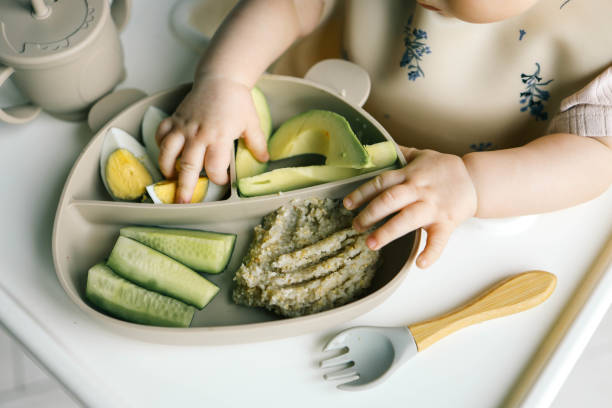It’s funny how, before having a baby, you picture mealtimes as a peaceful experience—your little one happily nibbling away at carefully prepared bites of food. Reality? A chaotic mix of flying broccoli, mashed banana on the walls, and a skeptical baby inspecting every new texture as if you were trying to poison them. Welcome to the adventure of baby-led weaning (BLW)!
What is Baby Led Weaning?
Baby-led weaning is an approach to introducing solid foods that skips the purée stage altogether. Instead of spoon-feeding, your baby explores real, whole foods at their own pace, developing independence and fine motor skills along the way. This method has gained popularity for its numerous benefits, including fostering a healthy relationship with food, improving hand-eye coordination, and making mealtimes a shared family experience rather than a separate baby-food affair.
Books and Resources to Help You Get Started
If you’re new to BLW, a little guidance can go a long way. Some excellent books on the subject include:
- Baby-Led Weaning: The Essential Guide by Gill Rapley & Tracey Murkett
- Born to Eat by Wendy Jo Peterson & Leslie Schilling
- BLW Quick & Easy by Sonia Overall
These books cover everything from safety guidelines to meal ideas, ensuring you feel confident as you embark on this journey.
Essential Equipment and Tools
BLW is messy—there’s no sugarcoating it. But with the right tools, you can minimize the chaos:
- Wearable bibs: Opt for long-sleeve, waterproof bibs to protect your baby’s clothes.
- Waterproof floormats: A lifesaver for easy cleanup (or just embrace the mess and accept that your dog will be thrilled with this new phase).
- A sturdy high chair: One without too many crevices for food to get stuck in.
- Soft-grip utensils: While BLW encourages self-feeding, introducing a spoon early on helps with coordination.
- Baby-safe plates and cups: Suction plates and open cups are great for encouraging independence.
A Gentle Approach: Introducing Foods Step by Step
BLW is all about following your baby’s lead, but a loose schedule can help ensure they get a good mix of nutrients:
- 6-7 months: Start with single-ingredient foods like avocado, banana, steamed carrots, or sweet potato.
- 7-9 months: Introduce more variety—soft meats, scrambled eggs, yogurt, and whole grains.
- 9-12 months: Offer more complex meals that include multiple food groups, like pasta with sauce or shredded chicken with roasted vegetables.
Dealing With the Gag Reflex (and Your Own Anxiety)
One of the scariest things for new BLW parents is the gagging. Unlike choking, gagging is a natural reflex that helps babies learn how to move food around in their mouths. It’s important to educate yourself on the difference and to practice staying calm. Watching videos on baby first aid can help ease the anxiety.
That being said, always follow safe food-prep guidelines—avoid round, hard foods like whole grapes or nuts, and cut food into appropriate sizes.
The Joy of Shared Meals
One of the most rewarding aspects of BLW is seeing your baby eat what the family eats. There’s something special about sitting down together and watching your little one develop their own preferences and curiosity about food. Sure, not every meal will be Instagram-worthy, but the confidence and independence they build through self-feeding is priceless.
Final Thoughts
Starting baby-led weaning can feel overwhelming, but trust the process. Embrace the mess, enjoy the little victories (like when they finally swallow a bite instead of wearing it), and know that every child progresses at their own pace. With the right mindset—and a few good waterproof bibs—you’ll get through it just fine.
